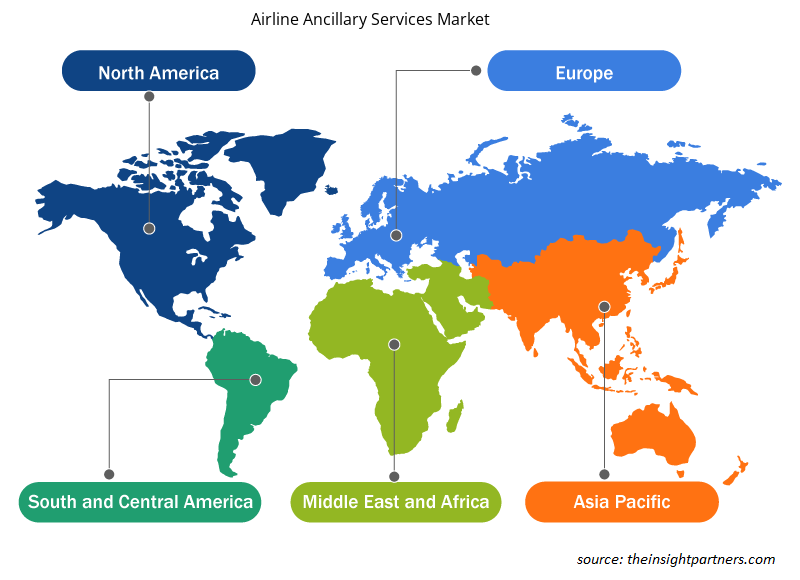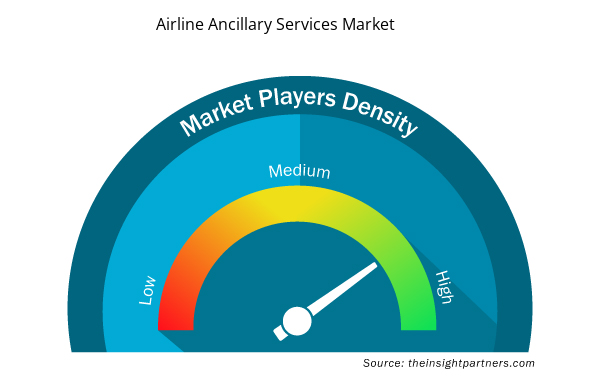[研究报告] 航空辅助服务市场规模预计将从 2022 年的 1688 亿美元增至 2030 年的 7285.3 亿美元;预计 2022 年至 2030 年期间市场复合年增长率为 20.1%。
分析师观点:
航空辅助服务市场的主要参与者正在见证娱乐、 Wi-Fi和餐饮等服务的需求不断增长。全球航空旅客数量的不断增长极大地推动了航空辅助服务市场的发展。辅助收入对航空公司商业模式至关重要;例如,在北美和欧洲等发达市场,瑞安航空、精神航空和 Allegiance 等航空公司已经认识到辅助收入对其总收入的重大贡献。这一趋势很快被亚太地区快速发展的经济体所采用,亚洲航空等航空公司发现其五分之一的收入来自辅助服务。因此,预计这一趋势将显著影响航空公司的收入,特别是在发展中经济体,这将进一步促进航空辅助服务市场的增长。
航空辅助服务市场概览:
航空辅助服务市场受益于乘客愿意为增加其体验价值的服务付费。座位升级、预订座位和行李托运是一些受欢迎的辅助服务。一些初创公司正在进入市场以满足这些不断变化的需求。此外,低成本航空公司在全球航空业中的重要性日益凸显。票务、机场服务、机上服务等强大的商业模式有助于低成本航空公司吸引社会各阶层的乘客。乘客对机上食品和饮料服务、Wi-Fi和零售等附加服务的需求不断增长,预计将为初创公司提供许多机会。除了上述辅助服务外,机上娱乐( IFE ) 服务预计将对航空辅助服务行业产生重大影响。由于数字文化客户,尤其是商务旅客,他们期待航空公司提供机上连接选项。研究还发现,大多数短途航线的乘客在登机时都需要网络访问以访问他们的数字设备。因此,对IFE的需求不断增长预计将提高辅助收入,从而对航空辅助服务市场的增长产生积极影响。
定制此报告以满足您的需求
您可以免费定制任何报告,包括本报告的部分内容、国家级分析、Excel 数据包,以及为初创企业和大学提供优惠和折扣
- 获取此报告的关键市场趋势。这个免费样品将包括数据分析,从市场趋势到估计和预测。
航空辅助服务市场驱动因素:
中等收入乘客航空出行偏好上升
根据国际航空运输协会 (IATA) 的数据,到 2036 年,航空旅客人数预计将达到约 78 亿。迅速崛起的中产阶级群体可能与发展中经济体航空旅客数量的增加有关。2021 年 10 月,联合国世界旅游组织 (UNWTO) 和国际民用航空组织等世界组织合作支持旅行和旅游业的复苏。2020 年 10 月,UNWTO 和国际航空运输协会签署了一份谅解备忘录,共同支持全球旅游业的恢复。该协议的主要重点是增强公众对航空旅行的信心,这进一步有助于增加空中交通量。据联合国称,中产阶级旅行者数量的增加,尤其是在中国和印度,是促进航空旅行和各种辅助服务增长的主要因素。随着世界从经济萎缩中复苏,对航空旅行的需求也在增加。航空旅行需求的不断增长导致了产品的生产增加,这极大地促进了对机上 Wi-Fi、超重行李、食品和饮料以及机上购物等辅助服务的需求。人们越来越重视为飞行乘客提供增强的服务,全球航空乘客数量不断增加,推动了航空辅助服务市场的增长。
航空辅助服务市场细分分析:
航空辅助服务市场按类型细分为行李费、机上零售和点菜、航空零售、FFP 里程销售等。行李费部分在 2022 年占据了最大的市场份额。行李费是航空公司对托运行李或携带额外行李在航班上收取的额外费用。这些费用与基本票价分开,并根据航空公司、目的地和行李重量或大小等因素而有所不同。行李费已成为航空业的常见做法,使航空公司可以赚取额外收入并为乘客提供更灵活的票价选择。旅客可以选择支付托运行李费用,或者如果他们只携带随身行李旅行,可以选择较低的基本票价。行李费的实施一直是航空辅助服务市场的一个重要方面,为航空公司提供了一种提高盈利能力的手段,并为乘客提供了旅行体验的选择。
航空辅助服务市场区域分析:
2022 年北美航空辅助服务规模为 6470 万美元;预计市场在 2023-2030 年期间的复合年增长率为 20.6%,到 2030 年将达到 2.8934 亿美元。北美航空辅助服务市场分为美国、加拿大和墨西哥。2022 年,美国占据北美航空辅助服务市场的最大份额。根据经济分析局的数据,美国 2022 财年第四季度的 GDP 增长了约 2.6%;GDP 的增长主要得益于强劲的商业投资和消费者支出。航空业对美国整体经济增长贡献巨大。民航业消费者支出和商业投资的增加预计将促进航空辅助服务市场的增长。
航空辅助服务市场关键参与者分析:
美国联合航空控股公司、美国航空集团公司、达美航空公司、易捷航空有限公司、德国汉莎航空有限公司、澳洲航空有限公司、瑞安航空控股有限公司、西南航空公司、阿联酋航空和法航荷航集团是航空辅助服务市场的主要参与者。
航空辅助服务市场区域洞察
Insight Partners 的分析师已详尽解释了预测期内影响航空辅助服务市场的区域趋势和因素。本节还讨论了北美、欧洲、亚太地区、中东和非洲以及南美和中美洲的航空辅助服务市场细分和地理位置。

- 获取航空辅助服务市场的区域特定数据
航空辅助服务市场报告范围
| 报告属性 | 细节 |
|---|---|
| 2022 年市场规模 | 1688亿美元 |
| 2030 年市场规模 | 7285.3亿美元 |
| 全球复合年增长率(2022 - 2030 年) | 20.1% |
| 史料 | 2020-2021 |
| 预测期 | 2023-2030 |
| 涵盖的领域 | 按类型
|
| 覆盖地区和国家 | 北美
|
| 市场领导者和主要公司简介 |
|
航空辅助服务市场参与者密度:了解其对业务动态的影响
航空辅助服务市场正在快速增长,这得益于最终用户需求的不断增长,这些需求源于消费者偏好的不断变化、技术进步以及对产品优势的认识不断提高等因素。随着需求的增加,企业正在扩大其产品范围,进行创新以满足消费者需求,并利用新兴趋势,从而进一步推动市场增长。
市场参与者密度是指在特定市场或行业内运营的企业或公司的分布情况。它表明在给定市场空间中,相对于其规模或总市场价值,有多少竞争对手(市场参与者)存在。
在航空辅助服务市场运营的主要公司有:
- 美国联合航空控股公司
- 美国航空集团
- 达美航空公司
- 易捷航空
- 德国汉莎航空
免责声明:上面列出的公司没有按照任何特定顺序排列。

- 获取航空辅助服务市场顶级关键参与者概览
最新动态:
航空辅助服务市场中的公司大量采用并购等无机和有机战略。以下列出了航空辅助服务市场的一些近期关键发展:
- 2023 年 2 月,美联航最近宣布,允许有小孩的家庭免费选择相邻座位。这一客户友好型举措承认为家庭提供无缝舒适的旅行体验的重要性,凸显了美联航致力于增强其辅助服务的承诺。
- 2023 年 1 月,达美航空宣布通过与 T-Mobile 合作,为美国乘客提供免费 Wi-Fi。从 2 月 1 日起,SkyMiles 常旅客计划会员将享受免费 Wi-Fi。此举是增强辅助服务产品的重要一步,表明达美航空致力于改善飞行体验并为其忠实客户增加价值。
- 2022 年 7 月,易捷航空采取一系列措施改善客户体验,以迎接夏季旅行季。这些措施包括为家庭提供专门的客户热线、延长客户服务时间、在主要机场提供“援助之手”服务以及重新推出暮光行李托运服务。该航空公司旨在为乘客提供额外的支持和便利,展示其致力于增强辅助服务的承诺。
- 历史分析(2 年)、基准年、预测(7 年)及复合年增长率
- PEST 和 SWOT 分析
- 市场规模价值/数量 - 全球、区域、国家
- 行业和竞争格局
- Excel 数据集


- Microcatheters Market
- Arterial Blood Gas Kits Market
- Public Key Infrastructure Market
- Authentication and Brand Protection Market
- Aesthetic Medical Devices Market
- Vessel Monitoring System Market
- Pressure Vessel Composite Materials Market
- Hydrolyzed Collagen Market
- Industrial Valves Market
- 3D Mapping and Modelling Market

Report Coverage
Revenue forecast, Company Analysis, Industry landscape, Growth factors, and Trends

Segment Covered
This text is related
to segments covered.

Regional Scope
North America, Europe, Asia Pacific, Middle East & Africa, South & Central America

Country Scope
This text is related
to country scope.
常见问题
The key players holding majority shares in the Global Airline Ancillary Services Market are United Airlines Holdings Inc, American Airlines Group Inc, Delta Air Lines Inc, EasyJet Plc, and Deutsche Lufthansa AG.
The rising preference for air travel by middle-income passengers, benefits of frequent flyer programs, and in-flight retail partnerships are the major factors that propel the Global Airline Ancillary Services Market.
Increasing deployment of in-flight wi-fi are impacting the Global Airline Ancillary Services, which is anticipated to play a significant role in the Global Airline Ancillary Services Market in the coming years.
The Global Airline Ancillary Services Market is expected to reach US$ 728.53 billion by 2030.
The incremental growth expected to be recorded for the Global Airline Ancillary Services Market during the forecast period is US$ 559.73 billion.
The Global Airline Ancillary Services Market was estimated to be US$ 168.80 billion in 2022 and is expected to grow at a CAGR of 20.1% during the forecast period 2023 - 2030.
Trends and growth analysis reports related to Aerospace and Defense : READ MORE..
The List of Companies - Airline Ancillary Services Market
- United Airlines Holdings Inc
- American Airlines Group Inc
- Delta Air Lines Inc
- EasyJet Plc
- Deutsche Lufthansa AG
- Qantas Airways Ltd
- Ryanair Holdings Plc
- Southwest Airlines Co
- The Emirates
- Air France KLM SA
The Insight Partners performs research in 4 major stages: Data Collection & Secondary Research, Primary Research, Data Analysis and Data Triangulation & Final Review.
- Data Collection and Secondary Research:
As a market research and consulting firm operating from a decade, we have published and advised several client across the globe. First step for any study will start with an assessment of currently available data and insights from existing reports. Further, historical and current market information is collected from Investor Presentations, Annual Reports, SEC Filings, etc., and other information related to company’s performance and market positioning are gathered from Paid Databases (Factiva, Hoovers, and Reuters) and various other publications available in public domain.
Several associations trade associates, technical forums, institutes, societies and organization are accessed to gain technical as well as market related insights through their publications such as research papers, blogs and press releases related to the studies are referred to get cues about the market. Further, white papers, journals, magazines, and other news articles published in last 3 years are scrutinized and analyzed to understand the current market trends.
- Primary Research:
The primarily interview analysis comprise of data obtained from industry participants interview and answers to survey questions gathered by in-house primary team.
For primary research, interviews are conducted with industry experts/CEOs/Marketing Managers/VPs/Subject Matter Experts from both demand and supply side to get a 360-degree view of the market. The primary team conducts several interviews based on the complexity of the markets to understand the various market trends and dynamics which makes research more credible and precise.
A typical research interview fulfils the following functions:
- Provides first-hand information on the market size, market trends, growth trends, competitive landscape, and outlook
- Validates and strengthens in-house secondary research findings
- Develops the analysis team’s expertise and market understanding
Primary research involves email interactions and telephone interviews for each market, category, segment, and sub-segment across geographies. The participants who typically take part in such a process include, but are not limited to:
- Industry participants: VPs, business development managers, market intelligence managers and national sales managers
- Outside experts: Valuation experts, research analysts and key opinion leaders specializing in the electronics and semiconductor industry.
Below is the breakup of our primary respondents by company, designation, and region:

Once we receive the confirmation from primary research sources or primary respondents, we finalize the base year market estimation and forecast the data as per the macroeconomic and microeconomic factors assessed during data collection.
- Data Analysis:
Once data is validated through both secondary as well as primary respondents, we finalize the market estimations by hypothesis formulation and factor analysis at regional and country level.
- Macro-Economic Factor Analysis:
We analyse macroeconomic indicators such the gross domestic product (GDP), increase in the demand for goods and services across industries, technological advancement, regional economic growth, governmental policies, the influence of COVID-19, PEST analysis, and other aspects. This analysis aids in setting benchmarks for various nations/regions and approximating market splits. Additionally, the general trend of the aforementioned components aid in determining the market's development possibilities.
- Country Level Data:
Various factors that are especially aligned to the country are taken into account to determine the market size for a certain area and country, including the presence of vendors, such as headquarters and offices, the country's GDP, demand patterns, and industry growth. To comprehend the market dynamics for the nation, a number of growth variables, inhibitors, application areas, and current market trends are researched. The aforementioned elements aid in determining the country's overall market's growth potential.
- Company Profile:
The “Table of Contents” is formulated by listing and analyzing more than 25 - 30 companies operating in the market ecosystem across geographies. However, we profile only 10 companies as a standard practice in our syndicate reports. These 10 companies comprise leading, emerging, and regional players. Nonetheless, our analysis is not restricted to the 10 listed companies, we also analyze other companies present in the market to develop a holistic view and understand the prevailing trends. The “Company Profiles” section in the report covers key facts, business description, products & services, financial information, SWOT analysis, and key developments. The financial information presented is extracted from the annual reports and official documents of the publicly listed companies. Upon collecting the information for the sections of respective companies, we verify them via various primary sources and then compile the data in respective company profiles. The company level information helps us in deriving the base number as well as in forecasting the market size.
- Developing Base Number:
Aggregation of sales statistics (2020-2022) and macro-economic factor, and other secondary and primary research insights are utilized to arrive at base number and related market shares for 2022. The data gaps are identified in this step and relevant market data is analyzed, collected from paid primary interviews or databases. On finalizing the base year market size, forecasts are developed on the basis of macro-economic, industry and market growth factors and company level analysis.
- Data Triangulation and Final Review:
The market findings and base year market size calculations are validated from supply as well as demand side. Demand side validations are based on macro-economic factor analysis and benchmarks for respective regions and countries. In case of supply side validations, revenues of major companies are estimated (in case not available) based on industry benchmark, approximate number of employees, product portfolio, and primary interviews revenues are gathered. Further revenue from target product/service segment is assessed to avoid overshooting of market statistics. In case of heavy deviations between supply and demand side values, all thes steps are repeated to achieve synchronization.
We follow an iterative model, wherein we share our research findings with Subject Matter Experts (SME’s) and Key Opinion Leaders (KOLs) until consensus view of the market is not formulated – this model negates any drastic deviation in the opinions of experts. Only validated and universally acceptable research findings are quoted in our reports.
We have important check points that we use to validate our research findings – which we call – data triangulation, where we validate the information, we generate from secondary sources with primary interviews and then we re-validate with our internal data bases and Subject matter experts. This comprehensive model enables us to deliver high quality, reliable data in shortest possible time.


 获取此报告的免费样本
获取此报告的免费样本